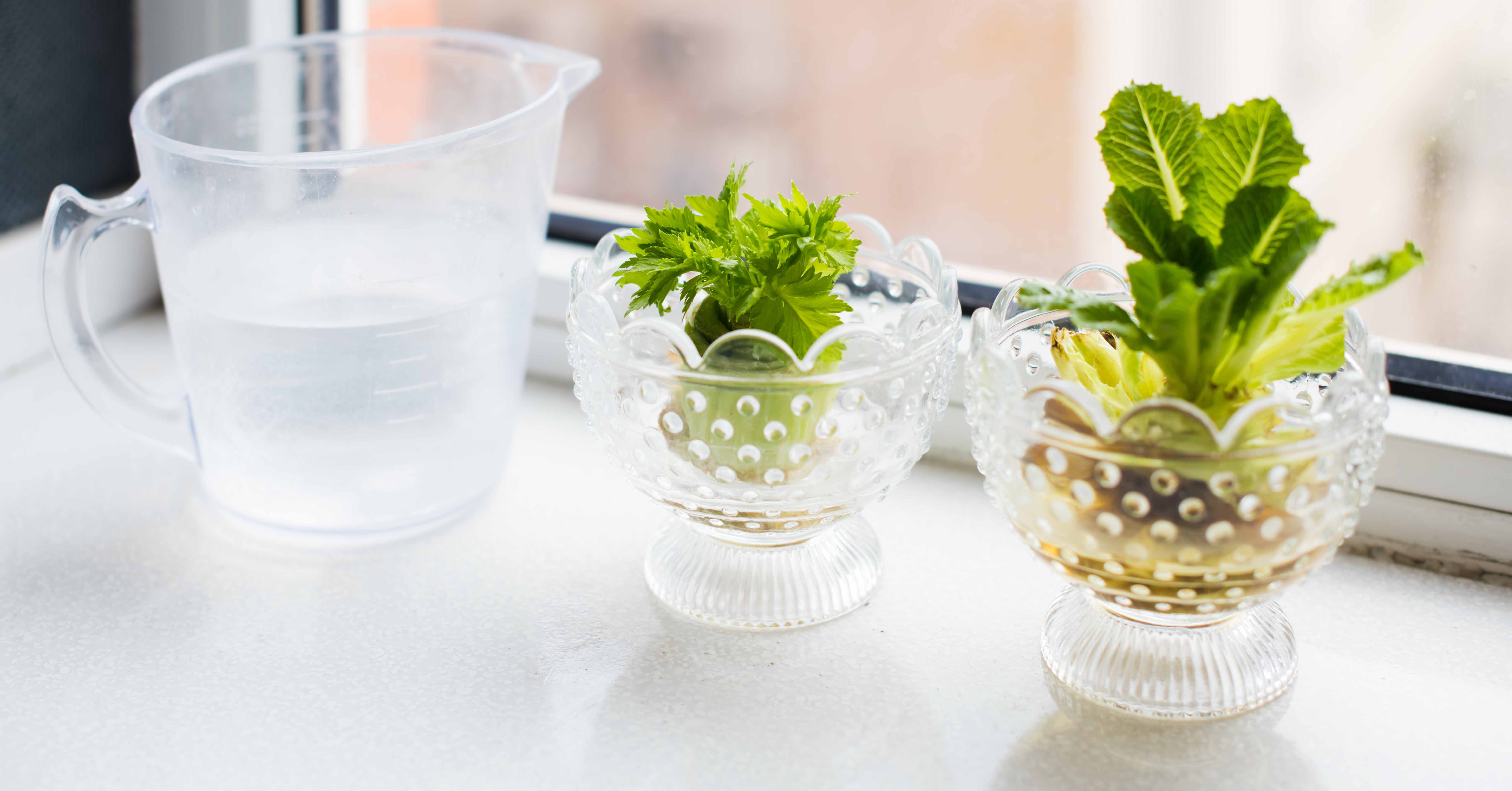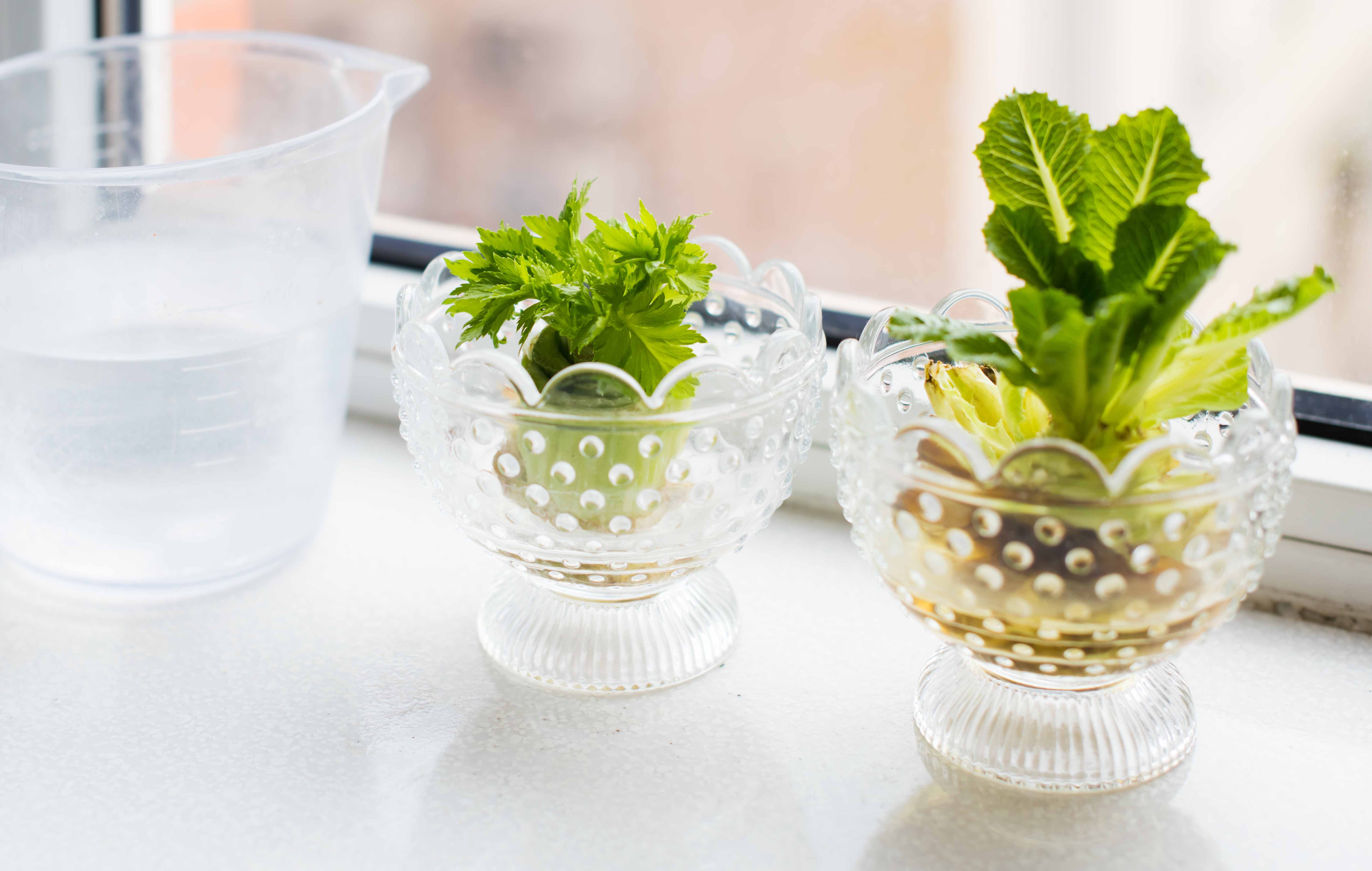How to regrow your veggies


With planting season upon us and pandemic lockdowns still in effect, many Canadians are creating victory gardens to pass the time, destress, and save money by growing their own food.
Victory gardens, a resurrected relic from the First and Second World Wars, require at least a small patch of land to work with, but not everyone has access to that. However, that doesn’t mean you have to forgo the experience of gardening! There are plenty of edible plants you can grow in your kitchen window or on your balcony. Not only will you have access to the freshest produce you can get, there are also a number of other benefits you can reap.
“Growing your own food, even on a small scale in your kitchen window, has many benefits,” says Dr. William Li, physician, scientist and author of Eat To Beat Disease.
“Caring for and feeding plants, watching them produce edible leaves, fruits and vegetables, harvesting them and using them in your meals connects you with your food and makes you feel gratitude for nature,” he says, adding that gardening on any scale can help reduce stress and anxiety.
“Studies have showed exposure to plants and landscapes makes people more productive, heal faster after medical procedures, and feel more relaxed,” explains Judson LeCompte, PhD, product development assistant manager at Spring Meadow Nursery in Michigan. “Simply having a potted plant in the corner can be beneficial. When you throw in growing an edible plant, now you have a source of healthy nutritious food.”
Here’s a list of some easy-to-grow edible plants:
Tomatoes
You can grow tomatoes from the seeds of ones you’ve bought, Li says, for a homegrown source of vitamin C and lycopene.
Avocado
“Eat the flesh, which contains healthy carotenoids, and regrow a new one from the pit,” says Li.
Green onions
You can clip and eat the green tops and then replant the white bulb, Li says.
LeCompte says he’s also been saving the bottoms of his green onions to regrow in a small pot in his kitchen window.
“Just make sure not to cut too far into the white portion and in a couple of weeks the onion has regrown enough to harvest,” he says.
Garlic
“Pull a clove from a bulb, plant it to sprout a new garlic plant, and keep harvesting this universally used spice that has heart-healthy properties,” says Li.
Bok choy
For bok choy, Li says you can use the green parts and then regrow the entire plant from the base.
Potatoes
If you have an available patch of ground in your backyard, potatoes are a great option to grow there – but you can just as easily plant them in a container or pot indoors.
“We have all had that potato we forgot about that started sprouting. This is the perfect candidate for planting,” LeCompte says. “Simply cut the sprouted potato into chunks that contain a couple of sprouts or ‘eyes.’ Let the cut pieces sit at room temperature for a day or two so the cut part of the potato can harden a little, then it is ready for planting around six inches deep. They are ready for harvest after the foliage dies back. After you dig them up, let the potatoes sit, unwashed, for a couple of days to allow them to cure.”
Basil
If you’d like to get some herbs growing at home, LeCompte suggests buying a basil plant from the grocery store.
“These can be potted into a larger pot and kept for a long time, allowing you to harvest a ton of basil. Just make sure to give it some fertilizer and plenty of sun.”
And if you’d like to try something new, LeCompte suggests giving one of his recent favourites a try – don’t worry, it’s beginner-gardener friendly.
It’s a type of honeysuckle called Yezberry Haskaps and it produces an edible berry.
“They can be grown in cooler regions and are pretty much no fuss plants,” he says. “They flower later in the season than most fruit so cold damaging the flower is not a concern. The nutritious olive-shaped fruit is sweet and can be eaten fresh or frozen. They don’t need any special soil or pruning, making them perfect for the beginner gardener.”
If you do give them a try, he recommends having a couple of plants close to each other to ensure good pollination.
Whatever plants you decide to grow, just have fun with it.
“During this time of stress and anxiety, gardening allows people the opportunity to reconnect with nature and become healthier,” LeCompte adds. “Also, don’t get frustrated if something doesn’t go perfectly, trust me I have killed plenty of plants, just keep trying.”
